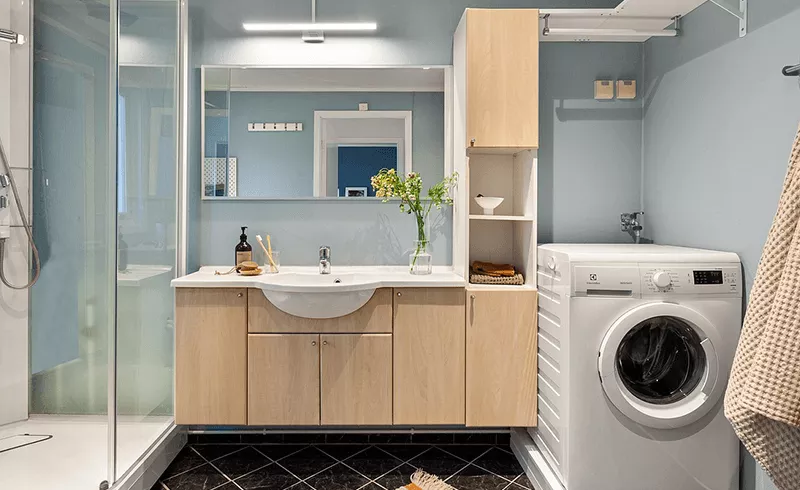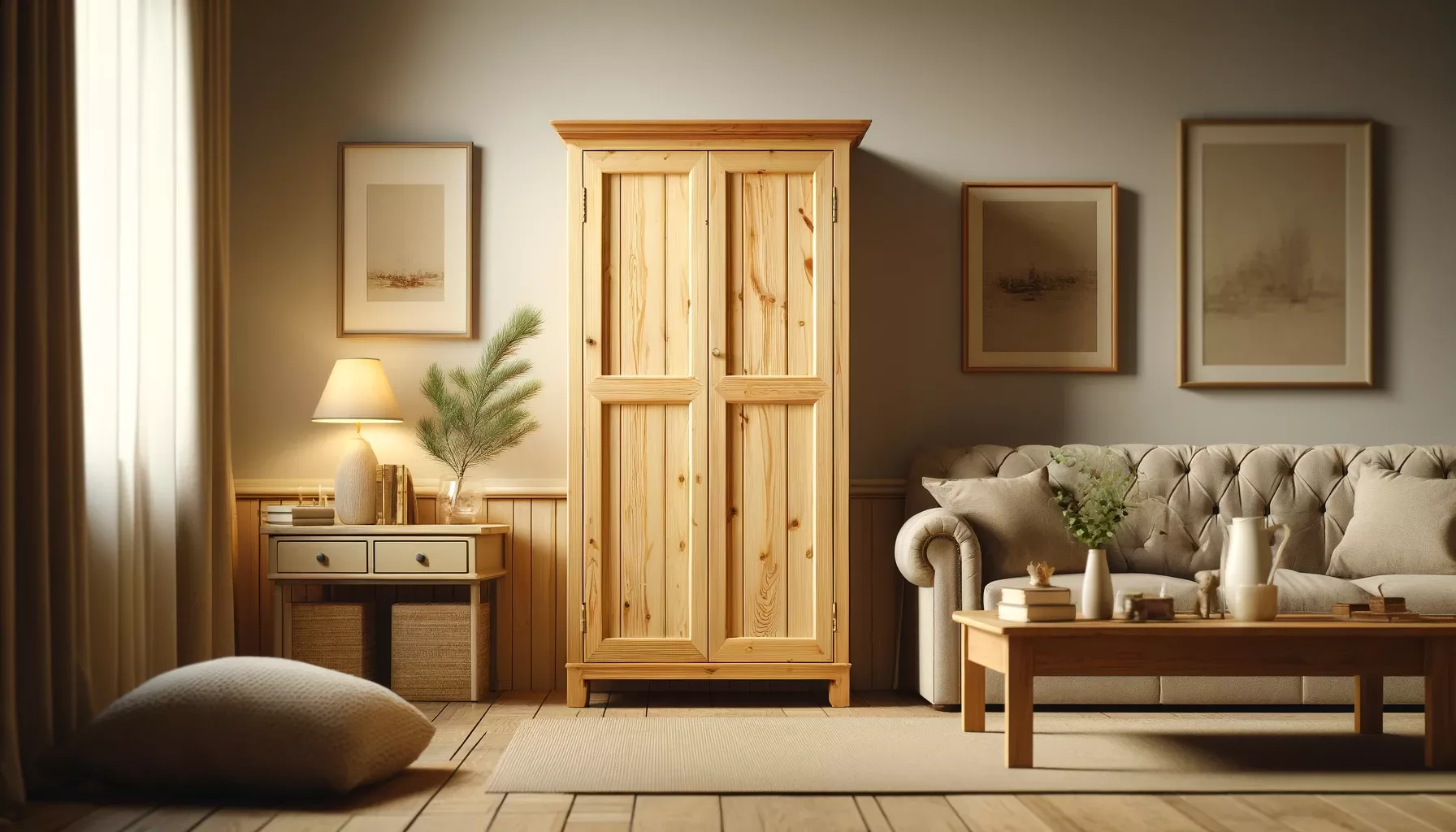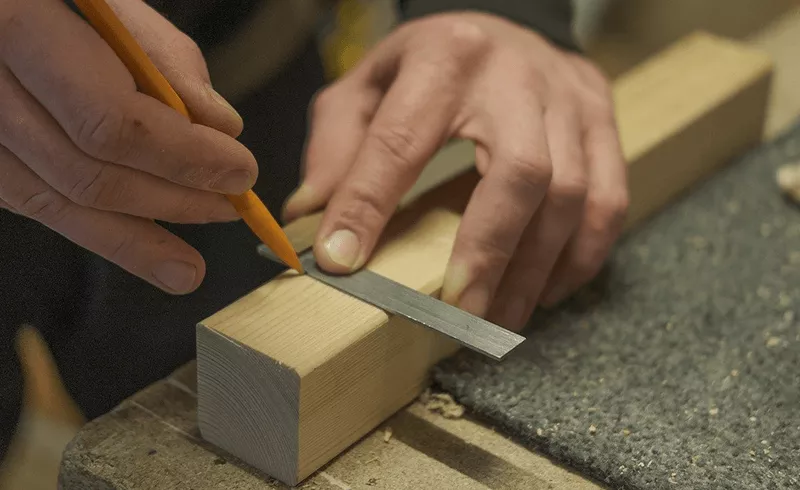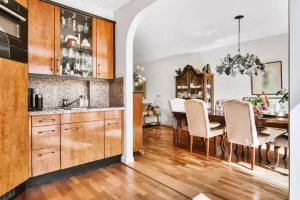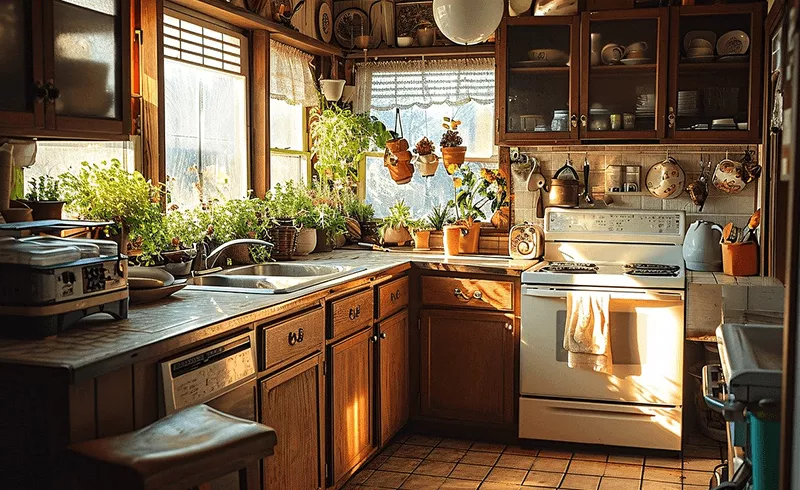
Wood cabinets are more than just functional elements of home storage; they are a testament to timeless style and craftsmanship. As a staple in interior design, wood cabinets offer aesthetic allure and practical utility, making them a favorite choice for kitchens, bathrooms, and living spaces.
Whether renovating an old home or personalizing a new one, selecting the right wood type and cabinet design is crucial. It enhances the overall decor and reflects your personal taste and lifestyle.
This comprehensive guide will explore the rich history, diverse types, and various design trends of wood cabinets. We'll delve into the fine art of cabinetry, discuss maintenance tips, and examine customization options to help you make informed decisions.
Whether you're a seasoned DIY enthusiast or considering professional installation, our insights will equip you with the knowledge to choose the perfect wood cabinets that blend functionality with elegance. Join us as we uncover wood cabinets' enduring beauty and versatility, an essential component of stylish and functional living spaces.
History of Wood Cabinets
Origins of Cabinetry
The use of wood for creating storage spaces dates back to ancient civilizations, where wood was one of the first materials to be carved and shaped into furniture. Early cabinets were primarily functional and used for storing household goods and valuables. As woodworking skills evolved, so did the complexity and design of these essential pieces of furniture.
Evolution Through the Ages
During the Middle Ages, wooden cabinets became more ornate, featuring intricate carvings that showcased the artisan's skill and the wealth of the owner. By the time of the Renaissance, cabinetry was recognized as not just practical storage but also as an art form, with woodworkers experimenting with different styles and techniques.
Cabinet-making flourished further in the 17th and 18th centuries, particularly in Europe. Cabinets from this era often featured elaborate designs with marquetry, inlays, and gilding, reflecting the Baroque and Rococo art movements. This period also saw the rise of recognized cabinetmakers who began to leave their marks on their creations.
The Industrial Revolution to Modern Times
The Industrial Revolution introduced new tools and mass production techniques, which made cabinets more accessible to the general public and not just the wealthy—this period marked a shift towards more standardized and functional designs. However, the appreciation for handcrafted wood cabinets continued, and there was a resurgence of custom, artisan-made pieces in the 20th century, especially with the Arts and Crafts movement that emphasized craftsmanship and natural materials.
Today, wood cabinets are celebrated for their functionality and role in interior design. They can be custom-made by artisans or mass-produced in factories, but the essence of woodwork and its rich history continue to influence modern designs and preferences.
Types of Wood Used in Cabinets
Hardwood vs. Softwood
Choosing hardwood and softwood is crucial for wood cabinets, as each offers distinct advantages and characteristics. Hardwoods, derived from deciduous trees such as oak, maple, and cherry, are renowned for their durability and strength, making them ideal for cabinetry that endures frequent use. Softwoods, like pine and cedar, come from coniferous trees and tend to be lighter and less expensive, suitable for those seeking a budget-friendly option or a softer, more rustic aesthetic.
Popular Hardwoods for Cabinetry
- Oak: Known for its strength and durability, oak is a popular choice with a prominent grain pattern, making it ideal for traditional and rustic cabinet styles.
- Cherry: Cherry wood is valued for its smooth grain and reddish hue, which deepens with age. Due to its rich coloring and smooth finish, it is often used in formal or elegant cabinet designs.
- Maple: With its light color and subtle grain patterns, maple is versatile for many decor styles, particularly contemporary and modern designs. It is also highly durable and resistant to wear.
Common Softwoods for Cabinetry
- Pine: Pine is relatively soft, making it easy to work with. It has a visible grain and knots, offering a country or farmhouse style that's warm and inviting.
- Cedar: Known for its aromatic properties and moisture resistance, cedar is less commonly used for entire cabinets but is excellent for lining drawers and closets where moisture control is needed.
Exotic Woods and Their Unique Appeal
For those seeking something out of the ordinary, exotic woods like mahogany, ebony, and teak offer unique colors and grain patterns that can turn cabinets into focal points of a room. These woods are typically more expensive but are prized for their striking appearances and long-lasting qualities.
Design Styles and Trends in Wood Cabinets
Traditional Cabinet Designs
Traditional wood cabinets are characterized by their classic details and ornate moldings. Common features include raised panel doors, intricate trim work, and a rich, warm finish that conveys a sense of timeless elegance. This style often uses woods like cherry and mahogany, known for their deep colors and smooth textures.
Modern Cabinet Designs
Modern design takes a minimalistic approach with sleek, clean lines and often a monochromatic color palette. Modern wood cabinets are made from wood with a subtle grain, such as maple or birch, to maintain a smooth and uniform appearance. Hardware is usually simple or sometimes completely absent, emphasizing a streamlined facade.
Contemporary Cabinet Trends
Contemporary design is a blend of both traditional and modern elements, focusing on simplicity but with a touch of warmth and comfort. It often incorporates innovative materials and color schemes, like mixing wood with glass or metal, and may feature bold, contrasting colors. Wood types that balance grain and color, such as oak or walnut, are popular.
Emerging Trends in Cabinetry
- Minimalistic Designs: The trend towards minimalism continues to grow, with homeowners opting for simpler, more functional designs that do not compromise style.
- Mixed Materials: Combining wood with materials like metal, glass, or stone is becoming increasingly popular for a unique, custom look.
- Smart Storage Solutions: As homes become smarter, so do cabinets. Features like built-in charging stations, appliance garages, and motorized shelves are rising, enhancing functionality and convenience.
Global Influences on Cabinet Styles
Global design trends also influence cabinetry styles. Scandinavian minimalism, for instance, emphasizes natural woods with light finishes and clean lines, while Italian cabinetry may include more dramatic woods and high-gloss finishes. These influences help shape the evolving landscape of cabinet design, offering endless inspiration for personalizing spaces.
Craftsmanship and Construction of Wood Cabinets
Traditional Cabinet-Making Techniques
Cabinet-making is an art that combines fine craftsmanship with functional design. Traditional techniques like dovetail joints, mortise and tenon joints, and frame and panel construction are aesthetically pleasing and ensure the cabinets' structural integrity. These methods have been used for centuries to create durable, long-lasting wood furniture.
- Dovetail Joints: Often used in drawer construction, dovetail joints are famous for their resistance to being pulled apart and provide a strong, durable connection without the need for nails or screws.
- Mortise and Tenon Joints: This type of joinery involves inserting one end of a piece of wood (tenon) into a hole cut into another piece (mortise). It's renowned for its strength and stability in cabinet frames.
- Frame and Panel Construction: This technique accounts for the expansion and contraction of wood with changes in humidity. It allows for movement within the frame, reducing the risk of cracking or warping.
The Role of Craftsmanship in Cabinetry
Craftsmanship in cabinetry refers to the construction techniques and the attention to detail in the finishing touches, such as inlays, moldings, and finishes. High-quality craftsmanship ensures that cabinets are beautiful and built to last, capable of withstanding the rigors of everyday use.
Technological Advances in Cabinet-Making
While traditional craftsmanship remains highly valued, technology has made significant inroads into the cabinet-making process:
- CNC Machinery: Computer Numerically Controlled (CNC) machines allow for precise cuts and intricate patterns, enabling more complex designs and efficient production.
- Automated Joinery: Automation in joinery has increased the speed and accuracy with which cabinets can be assembled, helping to reduce costs and improve consistency in quality.
- Eco-Friendly Finishes: Advances in chemical engineering have led to the development of more durable and less toxic finishes, improving both the safety and the environmental impact of cabinet-making.
Quality Control in Construction
Quality control is paramount in the production of wood cabinets. It involves everything from selecting the right wood to ensuring that each piece meets specific standards of durability and finish. Proper quality control prevents defects and ensures that the final product maintains a standard of excellence that meets consumer expectations.
Maintenance and Care of Wood Cabinets
Daily Maintenance Tips
Keeping wood cabinets in top condition requires regular maintenance, which can significantly extend their lifespan and appearance. Here are some daily tips for cabinet care:
- Regular Dusting: Use a soft cloth or a feather duster to remove dust particles that can scratch the wood surface over time.
- Immediate Spill Cleanup: Wipe up spills as soon as they occur to prevent watermarks and potential warping of the wood.
- Avoid Harsh Chemicals: Cleaners with ammonia or bleach can damage wood finishes. Opt for mild soap, water, or vinegar diluted with water for a gentle, effective clean.
Long-Term Care Strategies
Beyond daily maintenance, there are several long-term strategies to ensure that wood cabinets remain beautiful and functional:
- Polishing and Waxing: Applying a high-quality furniture polish or wax every few months can help protect the finish and enhance the wood's natural beauty. Be sure to follow the manufacturer's recommendations for the type of finish on your cabinets.
- Humidity Control: Excessive moisture can cause wood to expand and contract, leading to warping or cracking. Maintaining a stable indoor humidity level can prevent these issues.
- Sunlight Protection: Prolonged exposure to direct sunlight can fade and damage wood finishes. Use curtains or blinds to minimize sun exposure on your cabinets.
Special Considerations for Antique or Heirloom Cabinets
If you have antique or heirloom wood cabinets, they may require additional care to preserve their historical value and integrity:
- Gentle Cleaning: Use a slightly damp cloth and avoid all commercial cleaners, which can strip away old finishes and patinas.
- Professional Restoration: For severe damage or wear, consider hiring a professional restorer who specializes in antique wood. This ensures that repairs are done with appropriate materials and techniques.
Repair and Restoration Advice
Even well-maintained cabinets can suffer from wear and tear over the years. Here's how to handle common issues:
- Scratch Repair: Minor scratches can often be masked with a matching wood marker or crayon. Professional refinishing may be necessary for deeper scratches.
- Loose Hinges and Hardware: Regularly check and tighten the hardware on your cabinets. If hardware becomes damaged or outdated, replace it to maintain functionality and appearance.
- Door Alignment: Over time, cabinet doors may become misaligned. Adjusting the hinges can help realign the doors, ensuring they close properly and evenly.
-
Customization Options for Wood Cabinets
Choosing Between Custom, Semi-Custom, and Stock Cabinets
When selecting wood cabinets, understanding the differences between custom, semi-custom, and stock options can help you make an informed decision that best fits your needs and budget:
- Custom Cabinets: These are made-to-order to fit specific dimensions and preferences. Custom cabinets offer the most flexibility in design, materials, and finishes, allowing for unique, tailored solutions for your space.
- Semi-Custom Cabinets: These provide some level of customization. While the basic cabinet sizes are pre-determined, you can choose from various styles, finishes, and modifications to meet your needs more closely than stock options.
- Stock Cabinets: The most budget-friendly option, stock cabinets are mass-produced and come in standard sizes and styles. Their quick availability and affordability make them a popular choice for many homeowners.
Working with a Cabinetmaker
Engaging a skilled cabinetmaker can transform your vision into reality. Here’s how to collaborate effectively:
- Share Your Vision and Needs: Be clear about what you’re looking for in style, functionality, and budget.
- Review Samples and Portfolios: Look at past work to ensure their style aligns with your vision.
- Discuss Timelines and Budget: Establish clear expectations for project timelines and costs upfront.
Adding Personal Touches to Mass-Produced Cabinets
If custom cabinets are beyond your budget, consider enhancing stock or semi-custom cabinets with personal touches:
- Hardware Upgrades: Changing out knobs, pulls, and handles can significantly alter the look of your cabinets and add a personal flair.
- Add Accessories: Install crown molding, glass panels, or under-cabinet lighting to elevate the appearance of basic cabinets.
- Functional Inserts: Add pull-out shelves, drawer organizers, or spice racks to increase functionality and maximize space.
Latest Trends in Cabinet Customization
Staying abreast of the latest trends can inspire unique customization options:
- Mixed Material Designs: Incorporating multiple materials, such as combining wood with metal or glass, is trending in cabinet design.
- Bold Color Choices: While wood typically suggests natural hues, vibrantly painted cabinets are becoming popular for adding color to kitchens and bathrooms.
- Eco-friendly Materials: Using reclaimed wood or sustainably sourced materials is environmentally responsible and adds character and history to your cabinets.
Installation and Setup of Wood Cabinets
DIY Installation Tips
Proper planning and tools are essential for those inclined to tackle cabinet installation themselves. Here are some key tips for a successful DIY installation:
- Measure Precisely: Accurate measurements of your space are crucial before anything else. Misjudging dimensions can lead to significant problems during installation.
- Gather the Right Tools: Ensure you have all the necessary tools on hand before starting, such as a level, drill, screws, and perhaps a stud finder for wall-mounted cabinets.
- Install Upper Cabinets First: This prevents the already-installed lower cabinets from obstructing your space during installation.
- Use Shims: Cabinets may need adjustments to align properly, especially in rooms with uneven floors or walls. Shims can help level and stabilize the units.
Professional Installation Services
While DIY can be rewarding, hiring professionals offers several advantages:
- Expertise and Efficiency: Professional installers have the experience to handle unexpected issues and can typically complete the installation faster.
- Tools and Techniques: Professionals come equipped with specialized tools and knowledge of the latest techniques, ensuring a high-quality finish.
- Warranty and Liability: Many installation services include a labor warranty, providing peace of mind that any problems will be rectified without additional costs.
Common Challenges in Cabinet Installation
Whether you choose DIY or professional installation, you might encounter several common challenges:
- Uneven Floors and Walls: Older homes especially can present this challenge, which might require extensive use of shims or even custom base units to ensure level installation.
- Complex Configurations: Corners, particularly lazy Susans or corner drawers, can be tricky and require precise alignment and installation.
- Integrating Appliances: Ensuring cabinets fit smoothly around appliances requires accurate planning and sometimes custom solutions.
Final Setup Considerations
Once cabinets are installed, a few final touches are needed to complete the setup:
- Adjusting Doors and Drawers: After installation, it's common for doors and drawers to require minor adjustments to align correctly.
- Sealing and Finishing Touches: Applying sealant around sinks and backsplash areas can prevent water damage. Adding final touches like toe kicks and trim can enhance the overall appearance.
- Safety Checks: It’s crucial to ensure everything is securely fastened and stable for wall-mounted units.
Cost Considerations for Wood Cabinets
Factors Influencing Cabinet Costs
When planning a budget for wood cabinets, it's important to understand the various factors that can influence the overall cost:
- Material Quality: The type of wood chosen significantly impacts price. Exotic hardwoods tend to be more expensive than domestic woods or softwoods.
- Construction and Customization: Handcrafted custom cabinets are typically more costly than semi-custom or stock options due to the labor and craftsmanship involved.
- Finish and Hardware: High-quality finishes and designer hardware can add to the cost but also enhance the durability and appearance of the cabinets.
Pricing Ranges for Wood Cabinets
Wood cabinets can vary widely in price based on their type and the abovementioned factors. Here’s a general breakdown:
- Stock Cabinets: This is the most affordable option, ranging from $100 to $300 per linear foot, and it suits those on a strict budget.
- Semi-Custom Cabinets: Mid-range pricing offers some customization, typically between $200 to $550 per linear foot.
- Custom Cabinets are the most expensive option, generally costing from $500 to $1,200 per linear foot, reflecting the cost of bespoke design and materials.
Budgeting for New Cabinets
Here are some tips to help manage the financial aspect of cabinet installation:
- Set a Clear Budget: Determine how much you can realistically afford to spend on your cabinets and stick to it.
- Consider Long-Term Value: Investing in higher-quality cabinets might be more expensive upfront but can offer greater durability and enhance property value.
- Look for Deals and Discounts: Check for sales, especially during major holidays, or consider purchasing display models at a reduced price from showrooms.
Cost-Saving Tips
To keep costs manageable, consider the following strategies:
- Choose a Less Expensive Wood: Opt for a more affordable wood type that still meets your aesthetic and durability needs.
- Refinish or Reface Existing Cabinets: If your current cabinets are structurally sound, refinishing or refacing them can provide a fresh look without the cost of full replacement.
- Do Part of the Work Yourself: Handling some aspects of the installation or finishing work yourself can reduce labor costs.
Comparing Cost Versus Value
When investing in wood cabinets, it's useful to consider not only the cost but also the value they add to your home:
- Enhanced Aesthetics: Beautifully designed cabinets can transform the look and feel of a room.
- Increased Home Value: Well-crafted wood cabinets can be a selling point, potentially increasing your home's resale value.
- Longevity and Durability: Quality cabinets can last decades, making them a worthwhile investment over cheaper, less durable options.
As you can see, choosing the right wood cabinets for your home involves more than just picking a style or color. It's about understanding the history and craftsmanship behind each piece, selecting materials that offer both beauty and durability and considering the long-term impact on your home's functionality and aesthetic.
Whether you opt for custom-designed pieces or more economical stock options, the importance of quality craftsmanship and proper maintenance cannot be understated.
As we've explored the various aspects of wood cabinets—from the types of wood used through the design trends to the details of installation and cost considerations—it's clear that these elements are integral to creating a space that is both functional and inviting. Wood cabinets are not merely storage solutions; they are central features of your home's design that can dramatically influence its overall look and feel.

James Smith is our editor. He is an accomplished and versatile news writer with over a decade of experience covering a wide range of topics, including politics, business, and real estate. Throughout his career, James has been dedicated to uncovering the truth and presenting unbiased, factual reporting to his audience.


